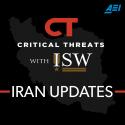Iran Update, May 19, 2023
May 19, 2023 - ISW PressThe Iraqi Popular Mobilization Forces (PMF) are consolidating their footprint in northern Iraq, which will likely increase the risk of sectarian conflict there. A PMF footprint could help Iran secure a new arms shipment route into Syria.
The IRGC Navy conducted unprofessional and unsafe maneuvers near a US naval ship in the Persian Gulf, which risks accidental collisions and miscalculations.
Anti-regime protests have flared up in Iran in response to increased state executions, demonstrating that many protesters remain undeterred from further protest despite the brutal regime crackdown during the Mahsa Amini movement.





